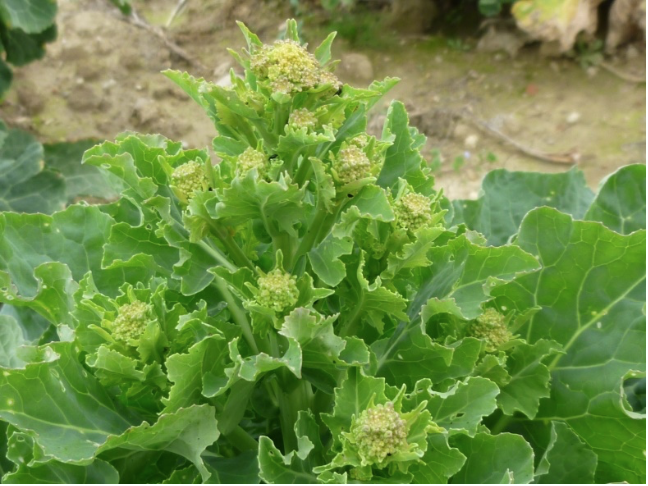Crop: Brassica oleracea L. var. italica Plenk. (Broccoli)
The landrace belongs to B. oleracea L. var. italica Plenck. The LR has been cultivated by the ‘Vento’ family in Umbria Region since generations. After the family abandoned the land over 15 years ago, some gardeners continued its cultivation by reproducing seed yearly and applying the mother plant selection procedures inherited from the Vento family.
Cultivation System: low-input conditions.
Geographical Information
Country: Italy
Broccolo Vento was traditionally cultivated by the ‘Vento’ family in the municipality of Todi (Perugia, Italy). Currently, accessions of ‘Broccolo Vento’ are conserved on-farm by Dipartimento di Scienze Agrarie, Alimentari e Ambientali of Perugia University (DSA3_UNIPG).
Farmer(s) description:
Dipartimento di Scienze Agrarie, Alimentari e Ambientali of Perugia University (DSA3_UNIPG), public body.
Propagation system: Seed, cross-pollination
Multiplication procedures and consequences on landrace diversity:All the cultivated plants of the landrace are inter-crossed, while other Brassica ssp. plants cultivated nearby are removed from the field. The seed is collected from the most vigorous 2 or 3 mother plants which usually produce thousands of seeds.
Checking genetic diversity with molecular markers, landrace selection carried out over generations by the farmer has maintained a substantial diversity both in putatively neutral and EST-SSR/gene derived SSR.
It can also be supposed that, by choosing the most vigorous plant per generation, the farmer unconsciously selects those plants that have the highest heterozygosity, and different alleles are consequently maintained across generations (Ciancaleoni et al. 2014). This has already been suggested as a possible mechanism for maintaining diversity in a celery landrace (Torricelli et al. 2013).
Management plan existence:The landrace management relies completely on activities carried out at DSA3_UNIPG
Added Values
As conservation is only carried out by DSA3_UNIPG the landrace does not have a local nor national market.
Others (e.g. commercial/geographical brands or special traits):ND.
DSA3_UNIPG is currently maintaining on-farm the landrace; without this support the material would have undergone extinction.
In order to explain the within population genetic diversity of ‘Broccolo Vento’, few data are available to date. ‘Broccolo Vento’ long-term dynamic on-farm conservation needs to be better investigated and sustained by institution and authorities in the near future.
Uncertain. As this landrace is not registered as conservation or amateur variety, to have access to the resource please contact:
‘Regione Umbria’ (http://www.regione.umbria.it/agricoltura)
Case study provided by Dipartimento di Scienze Agrarie, Alimentari e Ambientali (DSA3), Università degli Studi di Perugia (UNIPG), Italy.
Most of updates have been communicated by Dr S. Ciancaleoni (Università degli Studi di Perugia).
- Ciancaleoni S, Raggi L, Negri V (2014) Genetic outcomes from a farmer-assisted landrace selection programme to develop a synthetic variety of broccoli. Plant Genet Resour 12:349–352. doi: 10.1017/S1479262113000592
- Torricelli R, Tiranti B, Spataro G, et al (2013) Differentiation and structure of an Italian landrace of celery (Apium graveolens L.): inferences for on farm conservation. Genet Resour Crop Evol 60:995–1006. doi: 10.1007/s10722-012-9896-5
